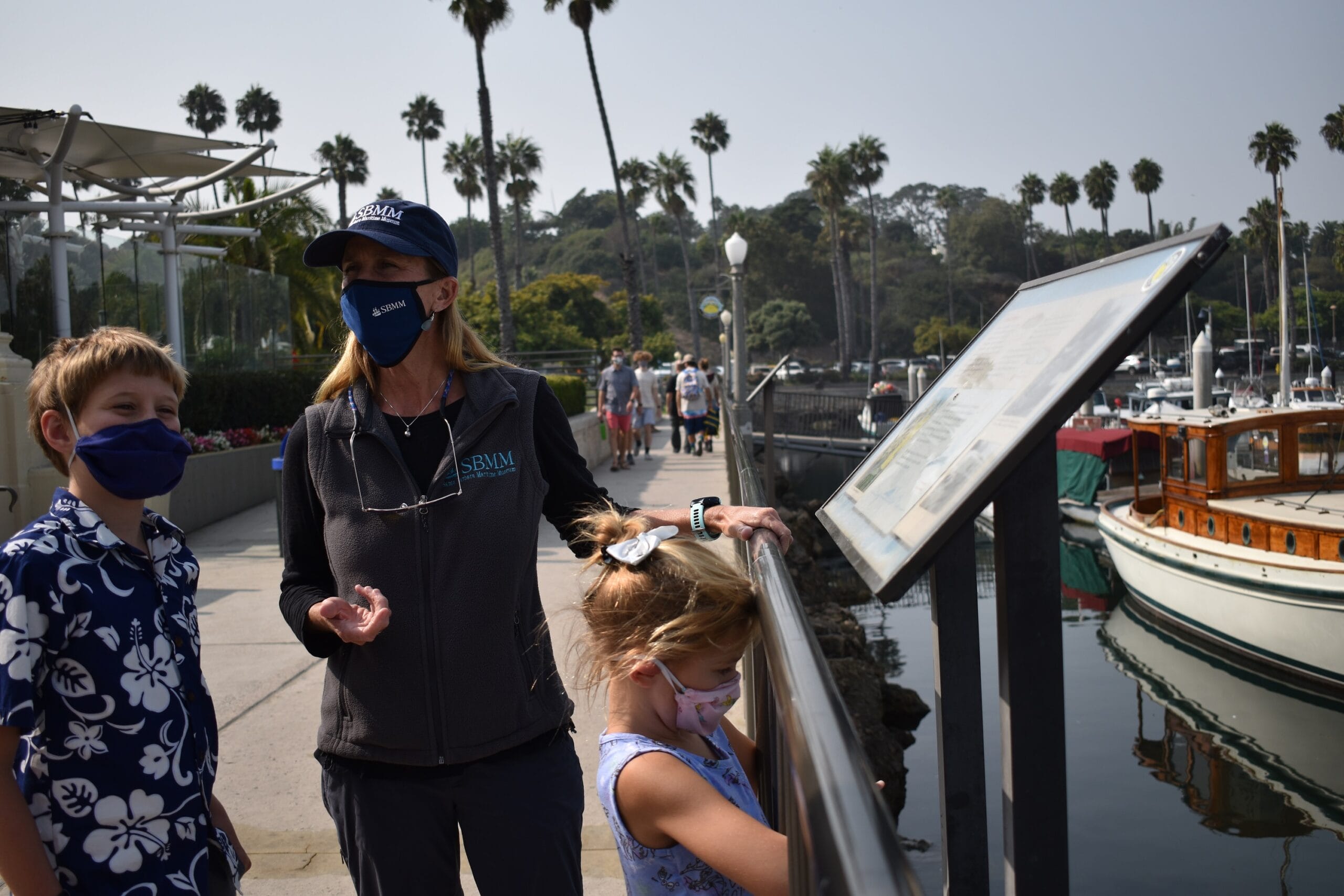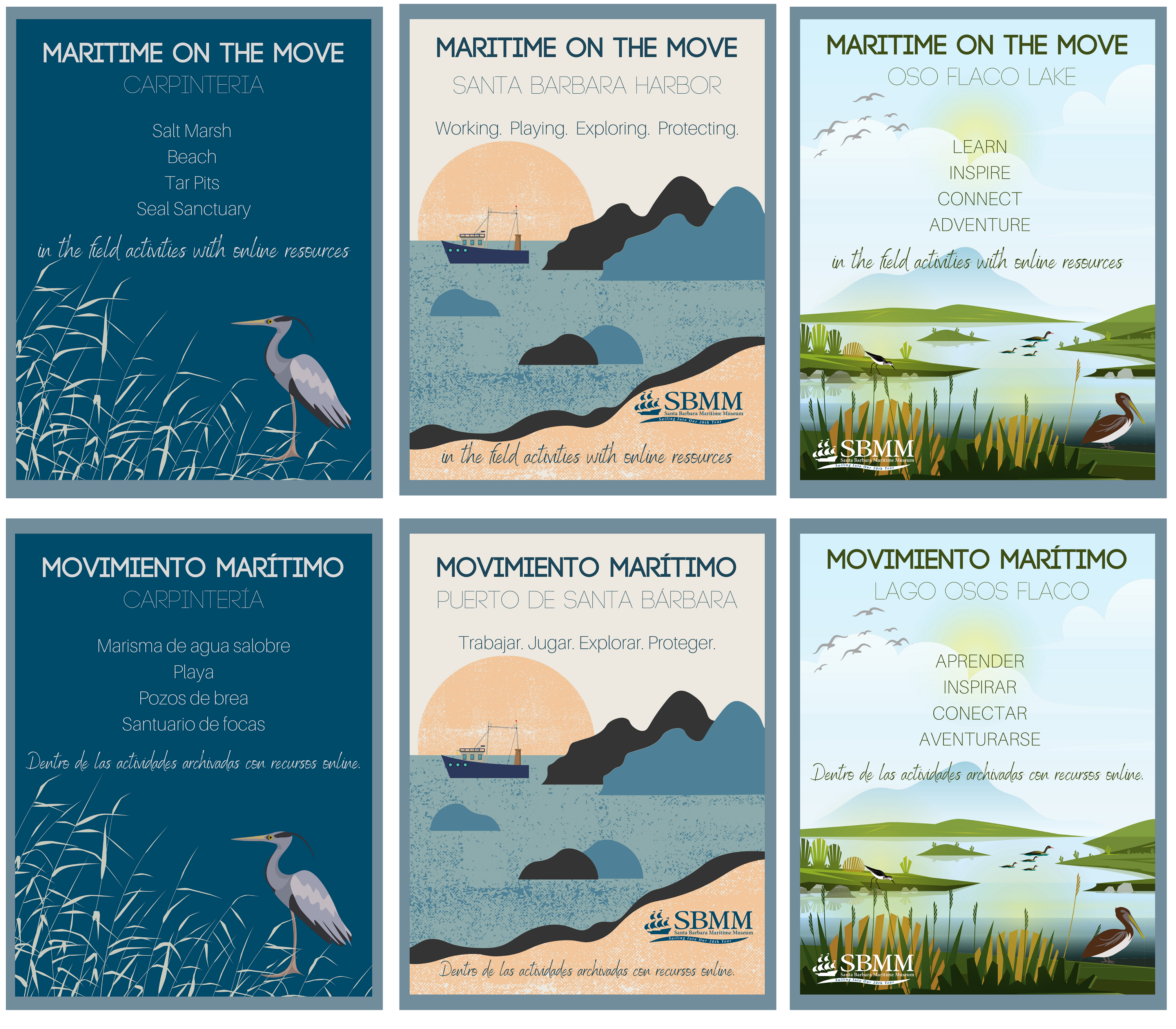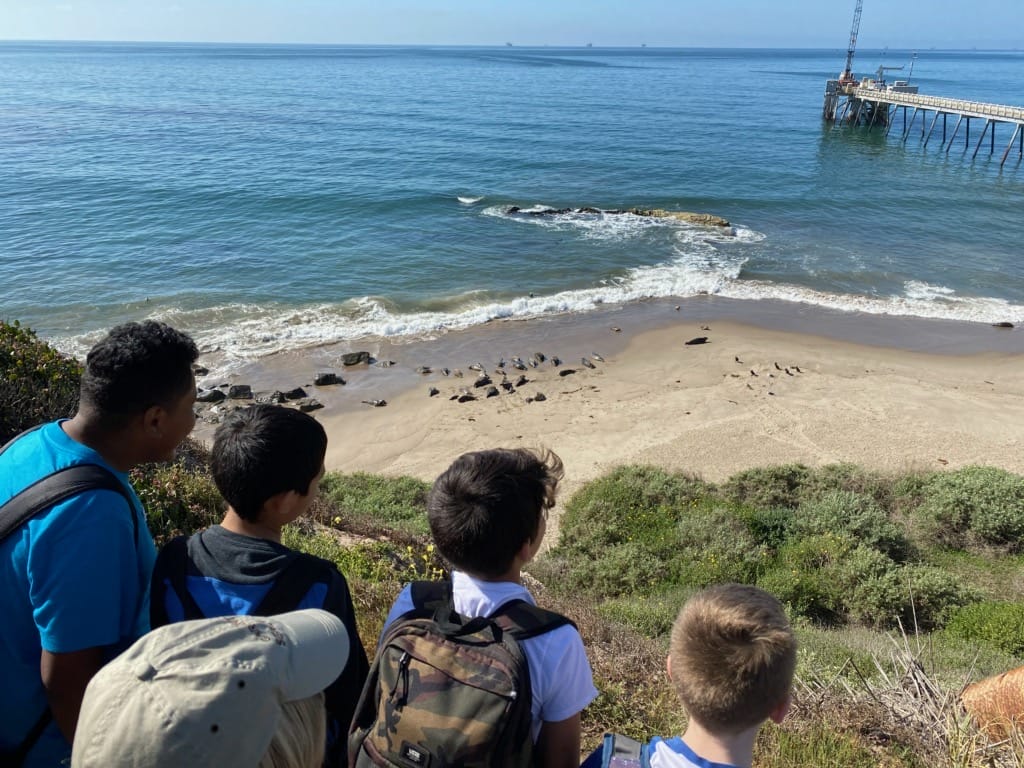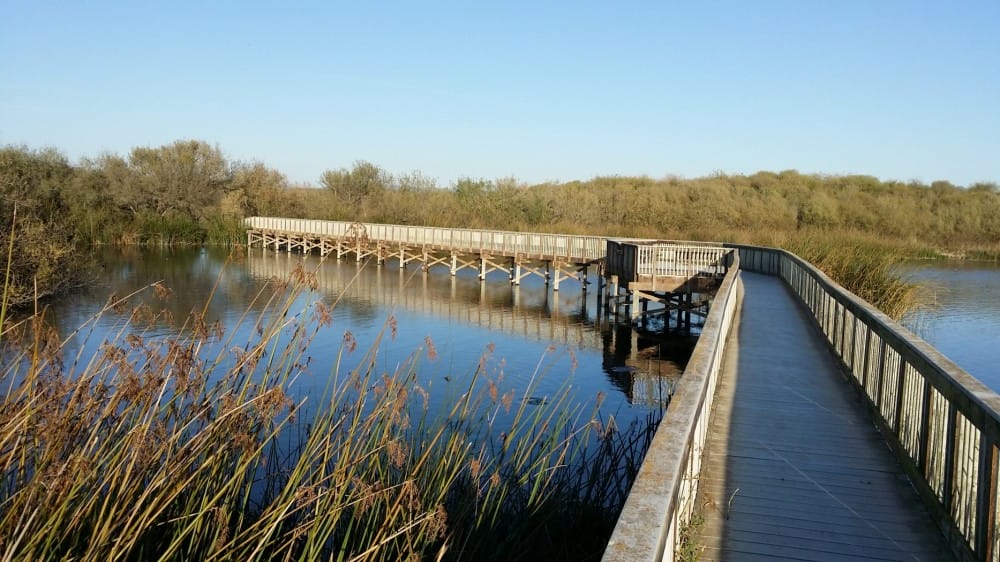Curator’s Log: Maritime on the Move – Developing an Education Program
by Rita Serotkin
As you may know, the Santa Barbara Maritime Museum’s (SBMM) Education Programs encourage curiosity through exhibits, experiential learning, and community outreach with special emphasis on California’s maritime history and human interactions with the sea. But have you ever wondered how the Museum decides which programs to offer and how and when to develop new programs? This is the story—a behind the scenes look—at the development and transformation of SBMM’s newest program, Maritime on the Move.

Back in 2019, Education Director Lis Perry and the Education Committee, chaired by Board of Trustee member Linda Stirling, undertook an evaluation of all the Museum’s programs. At that point, SBMM was serving 50 classes and 3,054 students from throughout the area; but they wanted to find a way for the Museum to engage even more children and people from throughout the County. One of the first issues they identified was the inability of some schools and after-school programs to participate in the Museum’s programs, most of which were held in and around the Harbor. For some of those schools and programs, even with Museum supplied grant-funded subsidies, the cost of renting buses and the need for parents to take a day off from work to chaperone presented insurmountable barriers. Further, existing programs were also limited in the number of children they could serve at one time because of boat capacities and available docents for tours. Out of these Education Committee discussions, the idea of taking an SBMM program to the schools and the areas where children live began to take shape; and Maritime on the Move (MotM) was born.

Pioneered successfully with more than 150 middle school students from Carpinteria in February 2020, MotM initially focused on Carpinteria’s salt marsh, beach, tar pits, and seal sanctuary. Its goals were threefold:
- to build knowledge of the area’s local nature, by exposing students to some of the complex environmental issues facing the long-term conservation goals of their communities
- to instill a sense of motivation for these children to take action to keep the area’s natural world healthy and
- to develop the critical thinking skills needed to understand the complexities of ecological problems we face today, all with the hopes of achieving a more sustainable future.
The pilot program was very successful and received the highest praise; but SBMM’s enthusiastic plans to take the program to other areas hit a giant roadblock on March 13: The Covid-19 pandemic required museum closure! Once we realized the Museum would be closed for more than just a week or two, the Education Committee went back to work to redefine its programs with creativity, innovation, and technology, and reimagining ways to continue to serve and educate the community while complying with social and safety restrictions.


First came SBMM at Home, one convenient web page from which visitors of all ages can access various educational activities and past lecture videos. Simultaneously, the Education Committee, with the aid of naturalist Holy Lohuis, transformed Maritime on the Move-Carpinteria into a collection of videos, activity booklets, infographics, walking maps, and reference materials that can be used at home by everyone—individuals, families, and teachers. Its adventures begin outdoors and incorporate engaging activities for students and adults of all ages to enjoy while exploring local ecosystems and biomes found in their own backyard. Since that initial success, similar materials have been prepared for the Santa Barbara Harbor and Oso Flaco Lake in Guadalupe—and all of the printed material is now available for download in English and Spanish! Additional materials will also be developed for the Santa Ynez Valley, and Lompoc in the near future. To add to the program’s versatility, it is offered in several modalities: in the field in-person with a naturalist, as a self-guided tour, live and/or pre-recorded in-the-field webinar, and in-classroom with a naturalist.
In discussing Maritime on the Move, Holly Lohuis has said:
It is fun being a part of SBMM’s outdoor education programs. The MotM booklets allow families to explore nature together, see how nature can teach us the importance of being present, and appreciate the awe and wonder of the given moment. We hope these booklets will inspire the love of watching wildlife and learning about the natural environments we are so fortunate to be a part of here in the tri counties. Exploring nature helps open our minds and hearts to better understanding the complexity and fragility of our surrounding natural world. I hope this will enliven the environmental steward in us all.
